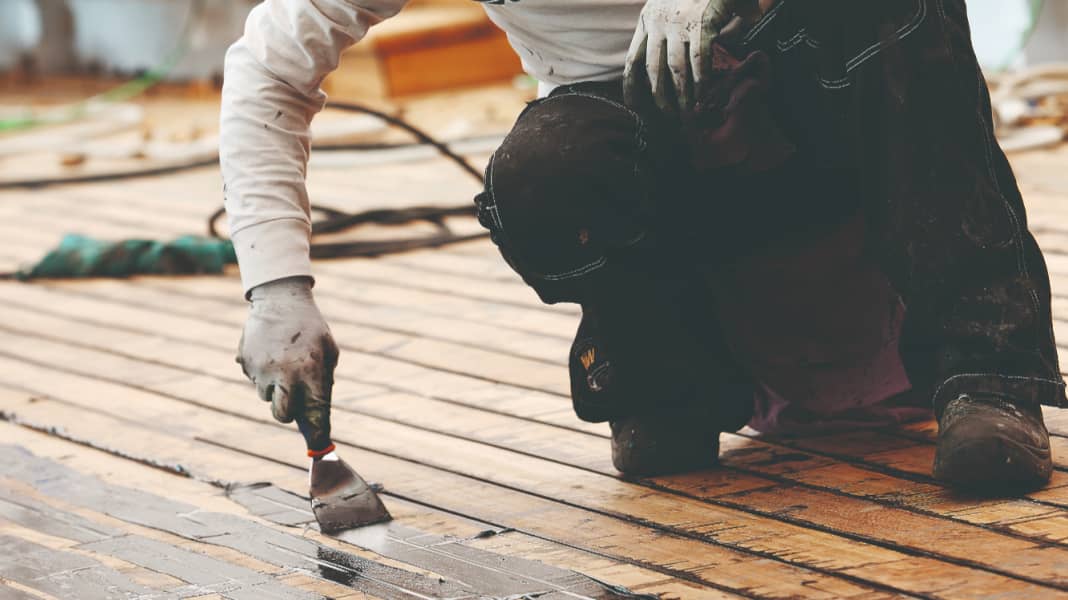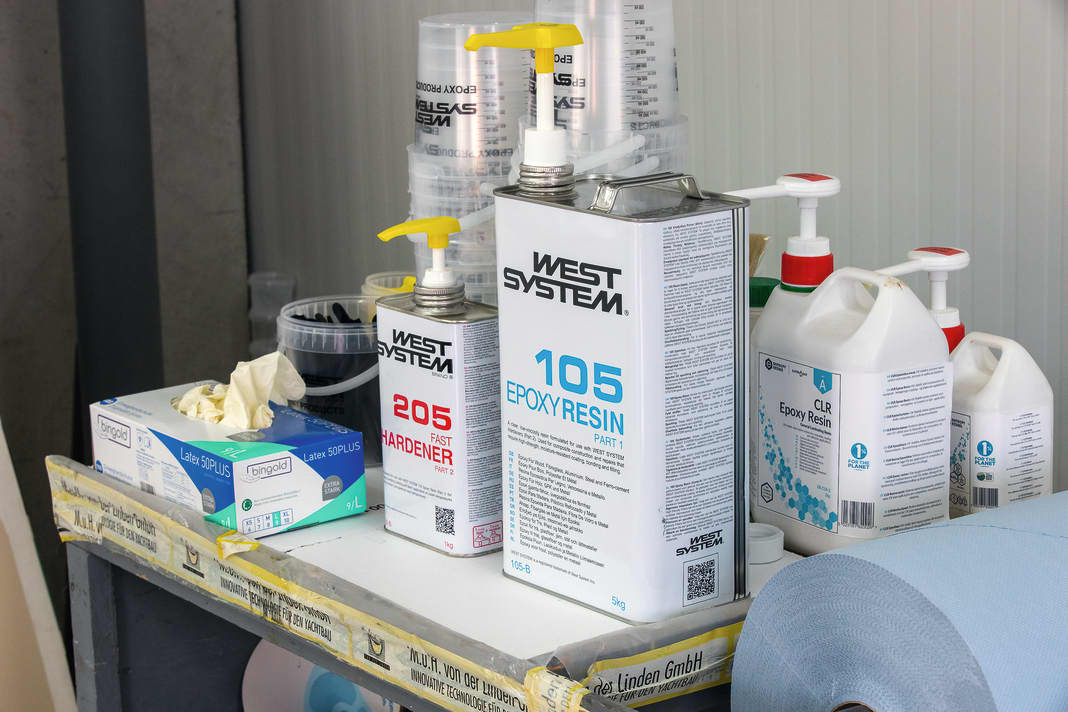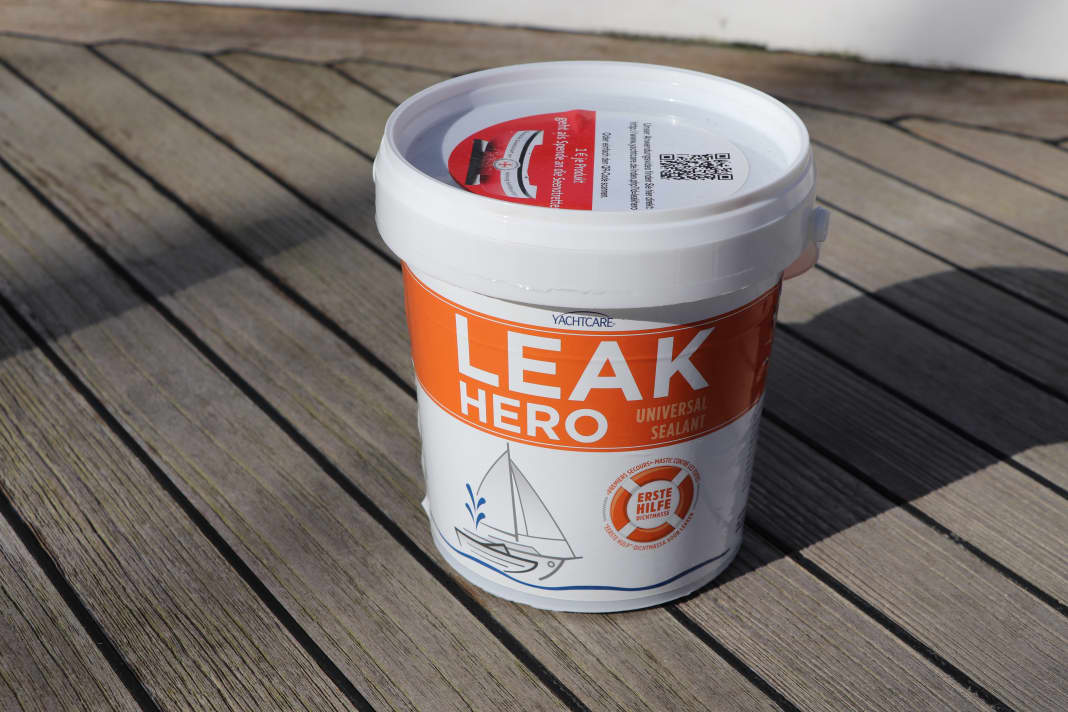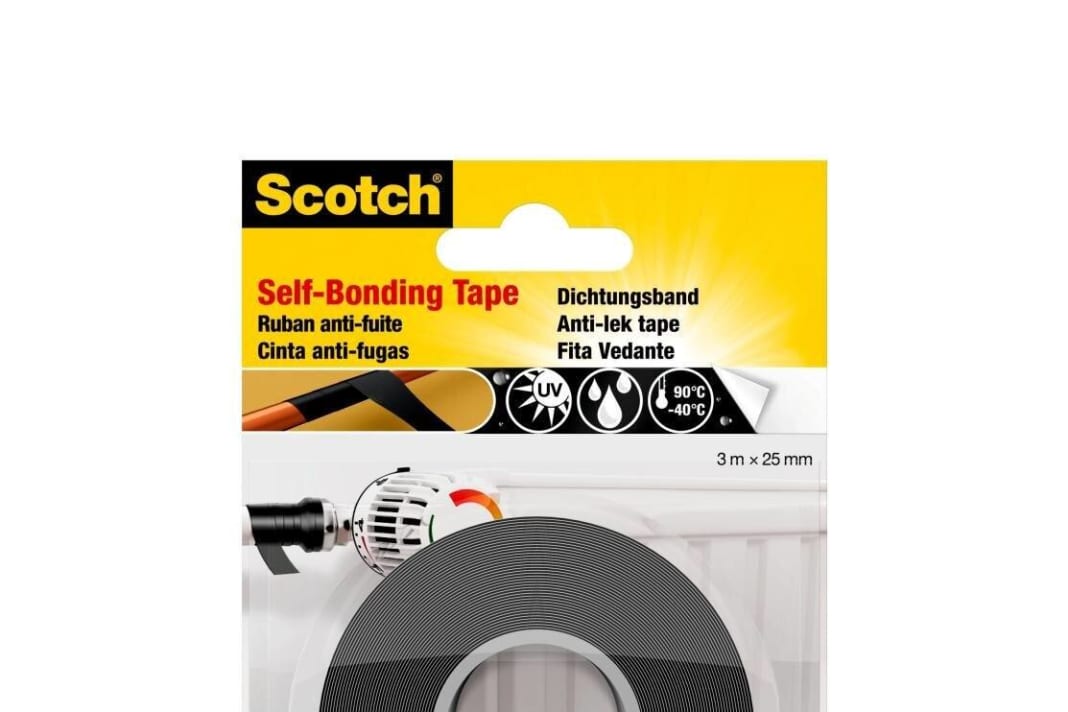
During the cold season, the time in the boat sheds is used for repairs and conversions. The list of jobs is often endless: the windows are leaking and need to be resealed or even completely replaced, the wooden drawer handle has broken on contact with a water tank and needs to be re-glued and the anti-slip deck has lost its anti-slip properties after 20 years in the fresh air. Adhesive tape, sealant and resin are needed for projects like this. However, there are already differences in the tape, depending on the area of application: from masking the water passage when applying the antifouling coating to repairing metals if, for example, the exhaust is no longer tight.
Of course, you don't always need to have all the products with you, but some of these practical helpers can never hurt on board. It's best to keep them in a lockable box and label them. That way, nothing gets wet and everything has a fixed place. If you have to search for the right roll or cartridge in the forecastle or bilge on a leaking boat, you're unlikely to find it straight away - which doesn't make it any easier to keep calm. You can get a suitable box for this at the DIY store. But don't forget: a quick, short-term repair is no substitute for a complete overhaul.
Glue




- Epoxy resin
- Weld seam from the bottle
- Sikaflex-252
They are often used on older boats in particular. Instructions for gluing or even laminating are a dime a dozen on the internet. Videos on YouTube showing how to do it are particularly illustrative - for example on BOOTE TV. Roughly speaking, there are two common types of resin: epoxy and polyester resin. We would clearly recommend epoxy. The advantage: epoxy resin also bonds with polyester resin, but not the other way round - sounds strange, but it's true. In addition, epoxy resin does not absorb water. For laminating, we recommend the products from the manufacturer West System. Application is very easy thanks to the pump canister and there is no need for tedious weighing. Various types are also available: for example, 5-minute epoxy, which is cured in 5 minutes and is suitable for fast bonding, G/flex 655 as a ready-thickened resin and various hardeners for laminating resin 105 with different curing times. Here you can choose freely. The slow hardener is recommended to start with.
One of von der Linden's bestsellers is Six 10, an epoxy that comes in a cartridge and is mixed directly using a static mixer. Epoxy resin is available on the Internet or from specialised dealers. The costs vary depending on the quantity. It starts at around 45 euros for 600 ml of laminating resin.
The weld seam from the bottle
For the bonding of metals or plastics, the weld seam from the bottle has been available for several years. The product is now a permanent fixture in some workshops and has found favour. The application is simple. The granulate is sprinkled onto the fracture. The second step is to add some of the corresponding adhesive - that's it. The resulting chemical weld seam develops a high adhesive strength and additionally reinforces the component - in a matter of seconds. The seam can then be processed, sanded and painted at your leisure.
For those who prefer to work with a cartridge gun, the well-known product Sikaflex-252 could be an option. The construction adhesive has been developed for dynamically stressed and structural bonding. For example, for keel-hull joints or for bonding wooden decks. Suitable substrates are wood, metals, in particular aluminium (including anodised), sheet steel (including phosphated, chromated and galvanised), primers and paints (2-component systems), ceramic materials and plastics. The one-component polyurethane adhesive transforms into an elastomer on contact with air humidity and hardens at the same time. However, it does not become as hard as epoxy resin. A cartridge costs around 34 euros at SVB and contains 300 ml.
Sealant





- Leak Hero
- Sikaflex 522
- Captain Tolley's
- Sealflex
In the event of a leak caused by a collision or a technical defect with water ingress, a small white and orange bucket called Leak Hero from Yachtcare can help. The wax-like sealant is simply removed from the bucket and pressed into the crack or opening. Incoming water does not affect the adhesive effect in the slightest, the agent adheres to the surface and seals the opening. If a small trickle does form over time, the sealant can simply be brushed over it again and seals once more. A good emergency solution to at least get the leaking boat into harbour before the damage is professionally repaired.
The Leak Hero can contains 625 ml, costs around 28 euros and is available from Bauhaus or online.
Captain Tolley's sealant penetrates the finest cracks responsible for the leak by capillary action. Due to its creeping property, it literally flows into every crack and seals it. It is particularly suitable for use on fittings, windows and hatches. However, according to the manufacturer, it can also be used on all other materials such as rubber, wood, glass or metal. It becomes transparent and remains flexible. It is available from SVB and Toplicht, among others. The 60 ml bottle costs around 17 euros.
The classic: Sikaflex
Everyone who owns a boat is probably familiar with Sika. Anyone who has ever taken a look at the product portfolio knows how many different types there are and how quickly you can lose track. One of the most important products for boat needs is Sikaflex 522, a silane-terminated polymer. The sealant and adhesive 522 is the successor to the well-known 221i and combines the same properties. The one-component 522 creates a high-strength bond and fulfils the highest EHS requirements. It shows good adhesion to a wide range of substrates with minimal pre-treatment and is suitable for elastic sealing and bonding applications indoors and outdoors. Suitable substrates include wood, glass, metals, paints (two-component systems), ceramic materials and plastics.
Before application, the bonding surface must be clean, dry and free of dust and grease. The adhesive and sealant can then be applied with a cartridge gun at an outside temperature between 5 °C and 40 °C. It can be painted over and has good colour stability under the influence of UV light. It can be painted over and has good colour stability under the influence of UV light. A cartridge costs around twelve euros and contains 300 ml. Available on the Internet or in almost any DIY store with a marine department.
A competitor product from Sika is Sabatack. This is also a one-component sealant, but is based on MS polymer with a long open time. Its main application is the simple and elastic bonding of mouldings, profiles or panels with high final strength. It is also suitable for sealing seams, overlaps and joints. Nils Schumacher, boat builder, application engineer and sales representative at von der Linden, tells us: "Sabatack 750 XL has become one of my personal favourite sealants. As it rarely needs a primer, it is very easy to apply and the surface only needs to be dust-free, dry and degreased. It is also free from diisocyanates." The cartridge contains 290 ml and costs around 15 euros. In addition to black and white, it can also be ordered in RAL 8015, grey or teak colours.
If you have a hole in your inflatable boat or dinghy, you can patch it in a similar way to a bicycle inner tube. Patches are often included in the scope of delivery. However, our test carried out together with YACHT has shown that this is not always the case.
The Sealflex PVC sealant is a 2-component sealant based on acrylic latex and is suitable for PVC, Hypalon and rubber hoses. The only thing missing for the repair is the right patch. Porous adhesions between the hoses and the rubbing strip can also be repaired with the product. Sealflex costs around 50 euros for a 500 ml bottle. It can be ordered from SVB, for example.
Adhesive tape






- Tesa precision crepe 4334
- Insulating tape
- Shrink tubing
- Sealing tape
- Holts Gun Gum
Finally, it's all about the adhesive tape on board: whether for masking and covering when painting or for sealing leaks, modern adhesive tapes are suitable for a whole range of applications. Cheap adhesive tape is often available from the discounter around the corner. DIY stores, on the other hand, also offer higher-quality (and correspondingly higher-priced) products. But the extra investment quickly pays for itself: Nothing is more annoying than if the paint runs under the adhesive tape, no matter how good the surface may look: If the edge is not clean and precise, the result is not satisfactory.
For such cases, we recommend Tesa precision crepe 4334, which consists of a thin and tear-resistant paper backing with an acrylic adhesive. Tesa is ideal for masking high-quality painting, varnishing and filling techniques on sensitive surfaces such as glass, aluminium, wood and, of course, plastic. Depending on the width, the 50 metre roll costs around seven euros and is available online or from DIY stores.
If you take care of the electrics yourself, you will of course also have insulating tape and heat-shrink tubing on board. Insulating tape is indispensable for electrical applications. They insulate electrical connections, protect cables from external influences and prevent short circuits. When buying insulating tape, it is important to choose the right type. There are basically two types of insulating tape: PVC insulating tapes are suitable for general use. Self-adhesive silicone tapes are waterproof and are of course more suitable for use on a boat. DIY stores are a good source of supply here.
If you prefer to work with heat-shrink tubing, you need to consider the same points. Here too, there are self-adhesive products that are especially recommended for boat applications. Prices range between two euros for normal insulating tape and up to ten euros for self-adhesive insulating tape. Available from DIY stores.
Self-welding sealing tapes as a quick aid
Self-welding sealing tapes are a good and, above all, quick aid for sealing leaks in the water system. Of course, this is not a repair or even something for eternity, but it can prevent the water tank from leaking and thus save the whole boat holiday. We have experience with the 3M Scotch self-sealing repair tape 4704, which enables airtight and watertight sealing of leaks - whether on inlet hoses or pipes.
The tape can be stretched by up to 650 per cent without tearing and is resistant to water and weathering. It can be used both indoors and outdoors and can withstand temperatures from -40 °C to 90 °C. However, it should be noted that the tape can lose its seal if it comes into contact with lubricants or petrol. It costs around six euros and, in our opinion, should not be missing from any toolbox. These products are available on Amazon for around nine euros.
Anyone with an older inboard motor will be familiar with the problem: the exhaust system is leaking and the smell of exhaust fumes is drifting into the interior of the boat. A quick and easy solution can be heat-resistant repair tape such as Gun Gum from Holts. The exhaust repair tape was developed to repair holes and cracks in silencers and create a gas-tight seal within a few minutes. The application is simple: moisten the tape and wrap it around the hole, allow to dry and harden - problem solved. You can buy it for six euros from Amazon or ATU.
For the sake of completeness: In the product box with the adhesives and sealants mentioned at the beginning, you should of course also find armour tape and double-sided adhesive tape - for everyday, less demanding repairs.

